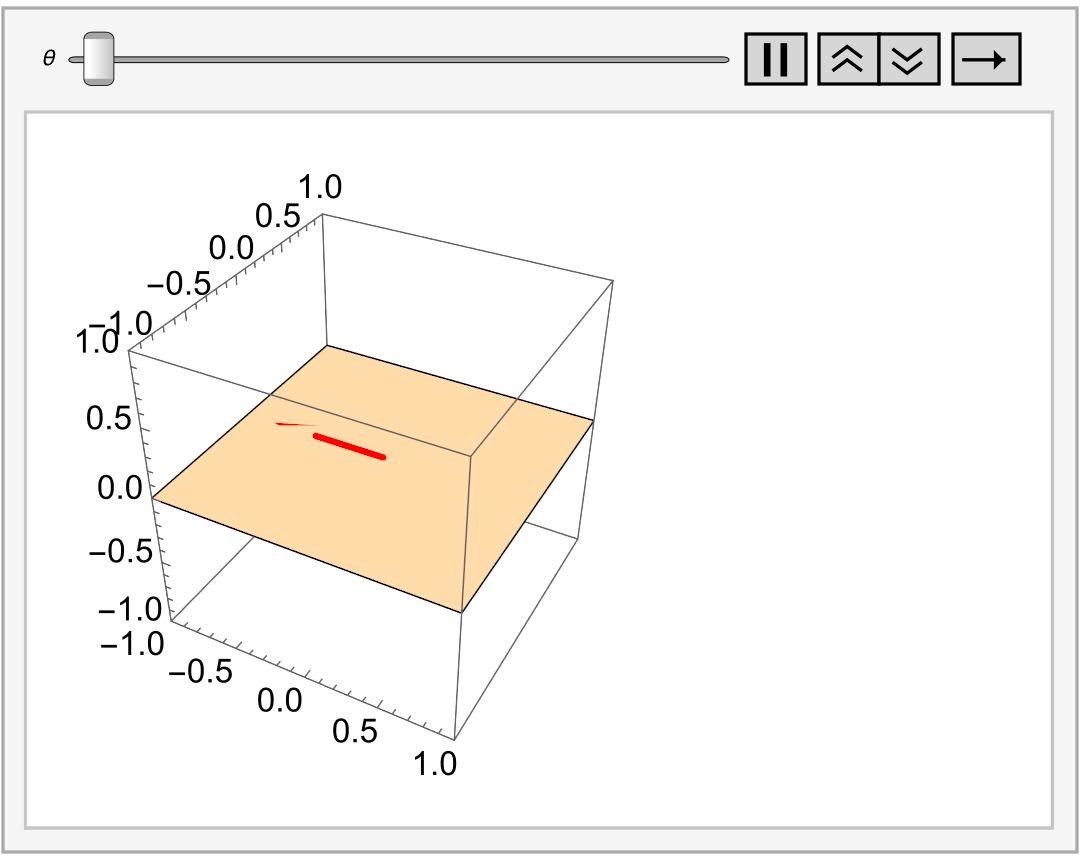The Wolfram Mathematica notebook which contains the code that produces all the Mathematica output in this web page may be downloaded at this link. Caution: This notebook will evaluate, cell-by-cell, sequentially, from top to bottom. However, due to re-use of variable names in later evaluations, once subsequent code is evaluated prior code may not render properly. Returning to and re-evaluating the first Clear[ ] expression above the expression no longer working and evaluating from that point through to the expression solves this problem.
Remove[ "Global`*"] // Quiet (* remove all variables *)
In many applications, a problem described using one coordinate system may be solved more easily by switching to a new coordinate system. This switch is usually accomplished by performing a change of variables, a process that you have probably encountered in other mathematics courses. Transformation of coordinates (position and orientation) from one frame of reference into another one is a fundamental operation in several areas: flight control of aircraft and rockets, movement of manipulators in robotics, and computer graphics.
Bases give us coordinates, and coordinates are a language for describing vectors and linear transformations. In linear algebra, a basis provides us with a coordinate system for a vector space, via the notion of coordinate vectors. Choosing an appropriate basis will often greatly simplify a particular problem.
Change of basis
We start with some motivated examples for changing bases that provide illustrations and additional insights to this topic.Most likely you are familiar with the basis changes in one dimensional case. Everybody who visits another country needs to make a currency change. Another famous example provides temperature change from Celsius to Fahrenheit---this issue has to be solved by every US visitor.
| English | Chinese | Russian | Arabic | |||
|---|---|---|---|---|---|---|
| Derivative | 导数 | Производная | المشتق | |||
| Matrix | 矩阵 | матрица | مصفوفة |
Solution: First, we show that these three polynomials are linearly independent. So we consider their linear combination and equate it to zero: \[ c_1 \left( x + x^2 \right) + c_2 \left( 2 + x \right) + c_3 \left( 3 + x^2 \right) = 0. \] The collecting similar terms, we get \[ 2\, c_2 + 3\, c_3 + \left( c_1 + c_2 \right) x + \left( c_1 + c_3 \right) x^2 = 0 . \] A polynomial is equal to zero only when all its coefficients are zeroes. So we get a system of equations \[ \begin{split} 2\,c_2 + 3\,c_3 &= 0 , \\ c_1 + c_2 &= 0, \\ c_1 + c_3 &= 0. \end{split} \] This system has only trivial solution c₁ = c₂ = c₃ = 0. Therefore, the given set of polynomials is a linear independent.
- ⟦I⟧α→β⟦x⟧α = ⟦x⟧β for all x in V.
- P = ⟦I⟧α→β is the unique matrix with the property that P⟦x⟧α = ⟦x⟧β for all x in V.
- P = ⟦I⟧α→β is invertible and P−1 = ⟦I⟧β→α.
(c) Since {e₁, e₂, … , en} is linearly independent in V, the set {⟦e₁⟧β, ⟦e₂⟧β, … , ⟦en⟧β} is linearly independent in 𝔽n by Theorem 3 of section. Hence P = ⟦I⟧α→β = [ ⟦e₁⟧β ⟦e₂⟧β ⋯ ⟦en⟧β ] is invertible by the Fundamental Theorem.
For all x in V, we have P⟦x⟧α = ⟦x⟧β. Solving for ⟦x⟧α, we find that \[ [\![\mathbf{x}]\!]_{\alpha} = \mathbf{P}^{-1} [\![\mathbf{x}]\!]_{\beta} \] for all x in V. Therefore, P−1 is matrix that changes bases from β to α. Hence, by the uniqueness property (b), we must have P−1 = ⟦I⟧β→α
Fundamental Theorem of invertible matrices:
Let A be an n-byn matrix. The following statements are equivalent.
- A is invertible.
- A x = b has a unique solution for every b in 𝔽n×1,
- A x = 0 has 0nly the trivial solution.
- The reduced row echelon form of A is I, the identity matrix.
- A is a product of elementary matrices.
- Anton, Howard (2005), Elementary Linear Algebra (Applications Version) (9th ed.), Wiley International
- Beezer, R.A., A First Course in Linear Algebra, 2017.
- Fitzpatrick, S., Linear Algebra: A second course, featuring proofs and Python. 2023.

